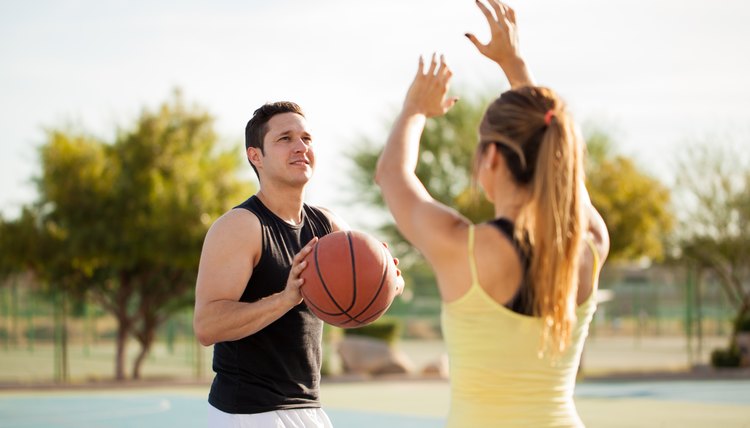Basketball Rules for a Blocked Shot

The blocked shot in basketball is one of the most effective defensive tools in the game. A player who can effectively block two or three shots in each outing becomes a credible defensive weapon and will command respect from the opponent. That's because once a player blocks a shot, the opponent realizes the defensive player can jump high enough to deflect shots at any point in the game.
Body Position
When attempting to block a shot in basketball, the defensive player most often will take a position directly in front of the offensive player. As the offensive player rises in the air to shoot his jump shot, the defensive player will also rise and extend one or both of his arms upward at the same time. As soon as the offensive player brings the ball up to a shooting position, the shot blocker mimics the movement and puts a hand in the way of the ball. The defensive player will use his hand or hands to swat the ball off line to keep the player from launching a successful shot. At no point may any part of the shot blocker's body make contact with the shooter's body.
Upward Angle
To block a shot legally, a defensive player must knock the ball off course as it travels an upward angle and before it has started to descend toward the basket. This prevents a player with great leaping ability from standing in front of the basket and swatting away shots as they fly toward the basket. A player who deflects a basketball as it is on its way down toward the basket can be called for goaltending, and the result will be two or three points for the offensive team, depending where the player launched the shot.
Common Misconceptions
A common belief in basketball is that "the hand is part of the ball." As a result, players think they have not committed a foul if they hit an opponent's hand while blocking or altering a shot. That is not correct. To register a successful blocked shot, you must primarily hit the ball If there is incidental contact between the shot blocker and the shooter after the block, then the referee will not call a foul. That contact must come as the player is in the downward portion of the jump.
Writer Bio
Steve Silverman is an award-winning writer, covering sports since 1980. Silverman authored The Minnesota Vikings: The Good, The Bad and The Ugly and Who's Better, Who's Best in Football -- The Top 60 Players of All-Time, among others, and placed in the Pro Football Writers of America awards three times. Silverman holds a Master of Science in journalism from the Medill School of Journalism.
